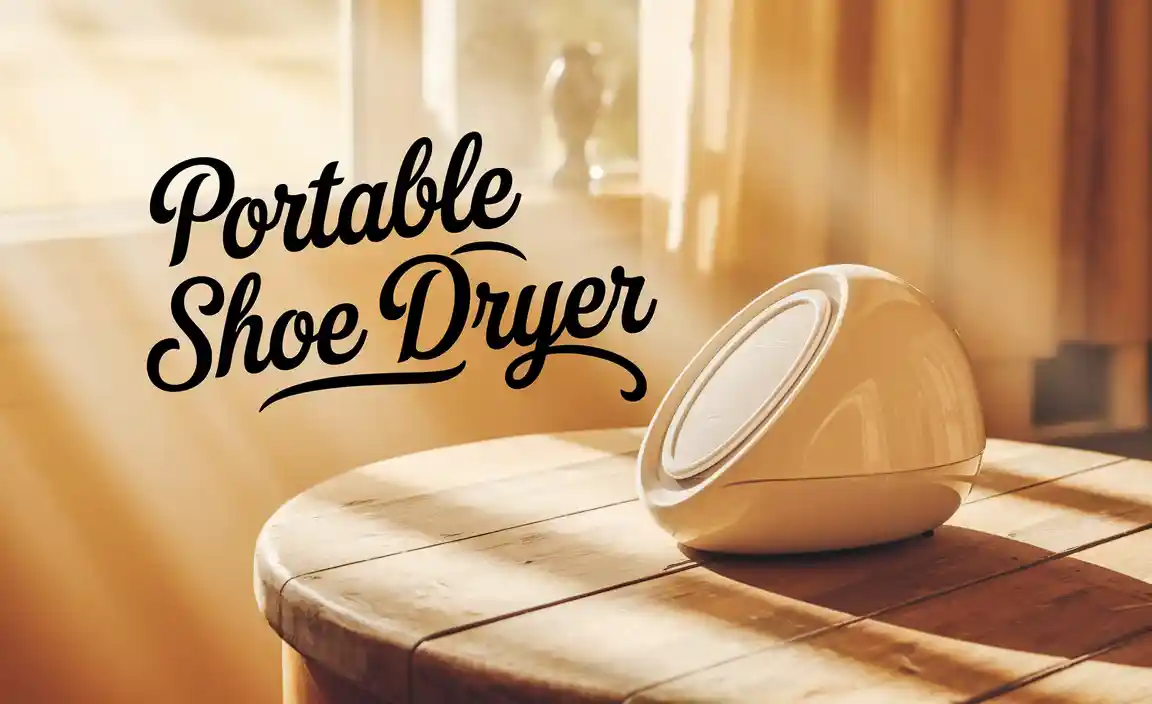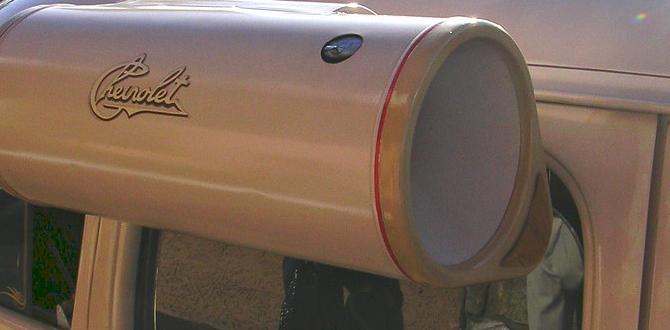Planning a trip to Bohol is exciting! To ensure your island adventure is smooth and worry-free, knowing about potential scams and common traveler mistakes is key. This guide will help you spot trouble and enjoy the beauty of Bohol safely.
Bohol is a tropical paradise known for its stunning natural wonders, from chocolate hills to tarsier sanctuaries. Millions visit each year, drawn by its unique charm and welcoming people. While most experiences here are wonderful, like any popular travel destination, it’s wise to be aware of a few common pitfalls.
Knowing these can save you money, time, and a lot of stress, allowing you to fully immerse yourself in the magic of Bohol. Let’s make sure your journey is as safe and enjoyable as possible.
Understanding Bohol Safety: What You Need to Know
Bohol is generally a safe place to visit. The local communities are friendly, and crime rates are relatively low compared to many other tourist hotspots. However, like any destination, travelers can sometimes encounter scams or make simple mistakes that detract from their experience. Being prepared is the best way to enjoy Bohol’s beauty without encountering unnecessary trouble.
The focus of Bohol safety is on being aware and prepared. This isn’t about instilling fear, but rather empowerment. By understanding what common issues arise, you can easily steer clear of them and have a truly memorable trip. Whether you’re traveling solo, with family, or as a couple, these tips are designed to make your journey smoother.
Common Scams in Bohol and How to Avoid Them
While Bohol is a gem, no tourist destination is entirely free from those looking to take advantage. Being aware of these common scams is your first line of defense.
1. The “Leisurely” Tricycle Tour Scam
Tricycles are a popular and fun way to get around Bohol’s smaller towns and attractions. However, some drivers might try to overcharge tourists for tours, especially if they perceive you as unfamiliar with standard rates.
The Scam: A tricycle driver may offer a full-day tour of attractions for a seemingly reasonable price. However, they might take you to places where they get a commission (like souvenir shops with inflated prices) or charge exorbitant fees for short distances. They might also claim that a certain attraction is “closed” to take you to a more profitable, less appealing alternative.
How to Avoid It:
Set the Price FIRST: Always agree on the total price for your trip before you get in. Be specific about the destinations included.
Do Your Research: Have a general idea of the main attractions and popular routes. Ask your hotel or resort for typical tricycle rates to key spots.
Use Trusted Sources: If possible, book tours or transportation through your accommodation or reputable tour operators.
Be Firm: If a driver seems insistent or unwilling to negotiate, politely thank them and find another.
2. The “Free” Island Hopping or Tour Upsell
This often happens if you’re looking for group tours or boat trips. Some operators might advertise a low base price, only to tack on excessive fees for “conservation,” “environmental,” or “environmental” charges that aren’t clearly stated upfront.
The Scam: You book an island-hopping tour for, say, a few hundred pesos, but at the end, you’re presented with a bill for thousands due to various hidden fees. Another variation is offering a “free” snorkel rental that comes with a mandatory, inflated “guide fee.”
How to Avoid It:
Clarify Inclusions: Ask explicitly what is included in the tour price. This means asking about entrance fees, guide fees, equipment rental, food, and any other potential charges.
Get it in Writing (If Possible): For larger tours or packages, try to get a written itinerary with all costs clearly itemized.
Look for Local, Reputable Providers: Ask for recommendations from your hotel or fellow travelers. Small, locally-run operations might offer better value and transparency.
Trusted Websites: Book any tours through established online platforms that show clear pricing and reviews.
3. The Souvenir Shop Commission Trap
This is closely related to the tricycle tour scam. Some drivers or guides might take you to specific souvenir shops where they receive a commission for your purchases. These shops often have prices higher than those found in markets or other retail areas.
The Scam: You’re steered towards a particular store and pressured to buy items. The prices are inflated, and the driver might even get a kickback from the store owner.
How to Avoid It:
Politely Decline: If your driver insists on a specific shop, politely say you prefer to browse other areas or have already found a place to shop.
Shop Smart: Compare prices at different shops. Local markets often offer better deals.
Be Wary of “Special Tourist Prices”: If a price seems unusually high, it probably is.
4. Overpriced Attraction Entrance Fees
While most attractions have fair entrance fees, some less regulated spots or individuals might try to charge foreigners a significantly higher price than locals or even other tourists.
The Scam: You’re quoted a price that seems steep for an attraction. If you ask, they might say it’s the “foreigner rate.”
How to Avoid It:
Check Official Websites: For major attractions, check their official websites beforehand for current entrance fees.
Ask Locals (Discreetly): If you feel a price is too high, you can casually ask a local friend or your hotel staff about the standard rate.
Observe Others: See what other tourists are paying.
Look up Government Tourism Sites: The Department of Tourism Philippines provides general guidance on tourist rights and common fees. You can find information via the official Department of Tourism Philippines website.
5. Fake Guides and Unofficial Tour Operators
At popular jump-off points for tours (like Panglao for island hopping or certain attractions), you might encounter individuals offering their services as guides or tour organizers. Not all are legitimate.
The Scam: Unofficial guides might be uncertified, lack local knowledge, or simply take your money and disappear after a short while, leaving you stranded or without the promised service.
How to Avoid It:
Only Use Licensed Guides: Look for guides with official identification or affiliations.
Book Through Reputable Sources: As mentioned before, your hotel or established tour agencies are the safest bet.
Ask for Credentials: If someone approaches you for guiding services, don’t be afraid to ask for their identification or tour company affiliation.
Common Mistakes Travelers Make in Bohol
Beyond outright scams, simple mistakes can lead to higher costs or missed opportunities. Here are a few common ones to watch out for:
1. Failing to Haggle (Where Appropriate)
While not everything is up for negotiation, in local markets, with tricycle drivers (before the ride), and in some souvenir shops, a little polite haggling can save you money.
The Mistake: Paying the first price offered without trying to negotiate.
How to Avoid It:
Know the Local Culture: In many parts of the Philippines, polite bargaining is part of the culture, especially for everyday goods and services.
Start Lower: Offer a price that’s lower than you’re willing to pay, but not ridiculously low.
Be Pleasant: Always do it with a smile and a friendly demeanor. If the seller isn’t budging, accept it gracefully.
When NOT to Haggle: Don’t haggle at established restaurants, legitimate tour operators with clearly marked prices, or formal retail stores.
2. Not Planning Transportation in Advance
Bohol is larger than it appears, and attractions are spread out. Relying solely on spontaneous taxi or tricycle hires, especially for longer distances or to remote spots, can be costly and time-consuming.
The Mistake: Assuming transportation will always be readily available and affordable, especially to less popular sites.
How to Avoid It:
Research Options: Look into renting a scooter/motorcycle (if you’re experienced and licensed), hiring a car with a driver for day tours, or using local buses for longer inter-town travel.
Book in Advance: For tours or car hires, it’s best to book a day or two in advance, especially during peak season.
Consider Tour Packages: For popular routes like the Chocolate Hills, Tarsier Sanctuary, and Loboc River Cruise, organized tours often offer a convenient and cost-effective solution.
3. Underestimating Travel Times
Island roads can sometimes be winding, and traffic can be unpredictable, especially in and around Tagbilaran City and popular tourist areas like Panglao.
The Mistake: Rushing between destinations, leading to missed tours or a stressful itinerary.
How to Avoid It:
Buffer Time: Always add extra time to your travel estimates. Assume a 30-60 minute buffer for most journeys between major points.
Use Navigation Apps: Google Maps or Waze can give you a realistic idea of travel times, but still add a little extra.
Prioritize: If you have limited time, choose your must-see attractions and focus on those rather than trying to cram too much into one day.
4. Ignoring Local Customs and Etiquette
While Filipinos are generally very forgiving of tourist faux pas, showing respect for local culture enhances your experience and helps foster good relations.
The Mistake: Not being mindful of dress codes, public displays of affection, or general politeness.
How to Avoid It:
Dress Modestly: Especially when visiting churches or rural areas, wear something that covers your shoulders and knees.
Learn Basic Phrases: A simple “Salamat” (Thank you) and “Po” (a respectful particle) go a long way.
Be Mindful of Noise: Avoid being overly loud in public places or quiet neighborhoods.
Respect Privacy: Avoid taking photos of people without their permission.
5. Not Securing Valuables Properly
While Bohol is safe, petty theft can occur, especially in crowded tourist spots or on public transport.
The Mistake: Leaving bags unattended, flashing large amounts of cash, or not using hotel safes.
How to Avoid It:
Use Hotel Safes: Always store passports, excess cash, and valuables in your hotel safe.
Keep Valuables Close: When out and about, use a cross-body bag or a money belt. Be aware of your surroundings.
Limit Cash: Only carry the amount of cash you need for the day.
Secure Electronics: Keep cameras and phones out of sight when not in use, especially in crowded areas.
Essential Bohol Safety Tips: A Checklist
Here’s a quick rundown of essential tips to keep your Bohol adventure safe and enjoyable.
Before You Go:
- Research: Familiarize yourself with the main attractions, typical costs, and travel routes.
- Book Accommodation: Secure your stay in reputable hotels or guesthouses. Look for places with good reviews regarding safety and service.
- Travel Insurance: Consider getting travel insurance that covers medical emergencies and trip cancellations.
- Inform Someone: Let a friend or family member know your itinerary.
- Pack Smart: Bring essentials like a first-aid kit, insect repellent, and appropriate clothing. If you require specific personal care items, like adult or child diapers for convenience or medical needs during travel, ensure you pack an adequate supply.
During Your Stay:
- Stay Hydrated: Drink plenty of bottled water.
- Sun Protection: Use sunscreen, hats, and sunglasses to protect yourself from the strong tropical sun.
- Food Safety: Eat at reputable restaurants and be cautious with street food if you have a sensitive stomach.
- Emergency Numbers: Know the local emergency numbers (though these can vary, have your accommodation’s number handy).
- Trust Your Gut: If a situation feels off, it probably is. Remove yourself from it.
- Be Aware of Your Surroundings: Especially in busy markets, transport hubs, and tourist attractions.
Transportation Options in Bohol: Safety and Practicality
Choosing the right transportation is key to navigating Bohol safely and efficiently. Here’s a look at common options:
| Transportation Type | Pros | Cons | Safety Tips |
|---|---|---|---|
| Tricycle | Affordable for short distances, readily available in towns, good for local feel. | Can be slow, limited range, potential for overcharging if not agreed upon. | Agree on fare BEFORE riding. Ask hotel for estimated rates. Not ideal for long inter-town travel. |
| Habal-Habal (Motorcycle Taxi) | Quick for solo travelers on uneven terrain or short distances to remote spots. | Less safe than cars/tricycles, limited luggage capacity, driver might not be experienced. | Always wear a helmet. Use only if comfortable with motorcycles. Only for short, essential trips. |
| Car/Van with Driver | Comfortable, convenient for groups, ideal for full-day tours, air-conditioned. | More expensive than other options, need to pre-book, depends on driver’s honesty. | Book through reputable agencies or hotel. Agree on itinerary and cost beforehand. |
| Scooter/Motorcycle Rental | Freedom and flexibility to explore at your own pace, cost-effective for longer stays. | Requires a valid license, experience is essential, risk of accidents, need for helmet and proper gear. | Ensure you have a valid international driving permit. Inspect the vehicle thoroughly. Always wear a helmet. Do not ride if tired or under influence. Consider local traffic laws of the Philippines. |
| Public Bus/Jeepney | Most affordable for inter-town travel, authentic local experience. | Can be crowded, often make many stops, may be difficult to navigate for first-timers, less comfortable for luggage. | Keep belongings secure. Be patient. Ask locals for route assistance if needed. |
When renting vehicles, especially scooters, ensure they are in good working order and that you have appropriate insurance. For longer journeys between cities like Tagbilaran and Panglao, booking a van or even considering local bus routes are practical options. Remember, Bohol Safety is enhanced by informed transportation choices.
Staying Safe While Enjoying Bohol’s Attractions
Bohol’s attractions are its main draw. Here’s how to enjoy them safely:
Chocolate Hills Complex
The Experience: Iconic cone-shaped hills offer breathtaking views.
Safety: Stick to marked paths and viewing decks. Avoid climbing on the hills themselves, as they are a protected natural wonder. Entrance fees are official.
Tarsier Conservation Area
The Experience: See the world’s smallest primates up close.
Safety: These creatures are nocturnal, shy, and easily stressed.
No Flash Photography: The bright light can damage their eyes.
Be Quiet: Loud noises can cause them stress and make them hide.
Do Not Touch: Tarsiers are delicate and can injure themselves if they fall.
Use Reputable Sanctuaries: Visit designated conservation areas like the Philippine Tarsier Foundation or the Bohol Tarsier Conservation Area to ensure ethical viewing practices.
Loboc River Cruise
The Experience: A relaxing lunch buffet cruise along a scenic river.
Safety: Ensure the boat operator is licensed and the vessel appears well-maintained. Life vests should be available and in good condition. Follow instructions from the crew.
Panglao Island Beaches (Alona Beach, Dumaluan Beach)
The Experience: Beautiful white sand beaches and clear waters.
Safety:
Rip Currents: Be aware of your surroundings, especially if swimming alone. Heed any posted warnings.
Sunburn: The sun is strong here; use ample sunscreen and stay hydrated.
Water Sports: Only use reputable operators for activities like snorkeling, diving, or kayaking.
Diving and Snorkeling
The Experience: Bohol is a world-class destination for marine life.
Safety:
Certification: Only dive with certified instructors and reputable dive shops.
Buddy System: Never dive or snorkel alone.
Respect Marine Life: Do not touch corals or marine animals.
Frequently Asked Questions
Q1: Is Bohol safe for solo female travelers?
Yes, Bohol is generally considered safe for solo female travelers. Filipino culture is generally respectful towards women. However, as with any travel, it’s prudent to exercise caution, stay aware of your surroundings, avoid walking alone in deserted areas at night, and trust your instincts.






